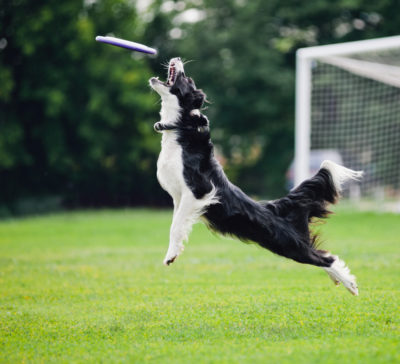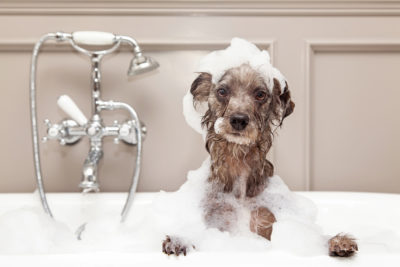 Adding a furry friend to your family can be an emotional experience, and the heart can override the head when it comes to both picking your new dog and mistakes dog owners make.
Adding a furry friend to your family can be an emotional experience, and the heart can override the head when it comes to both picking your new dog and mistakes dog owners make.
While most conscientious dog owners typically prepare for the inevitable chaos your new canine companion brings to their lives, many still make mistakes throughout the process. When you’re considering making a new pooch a family member, keep these common mistakes in mind and work to avoid them.
12 Mistakes Dog Owners Make
1. Looks and Want vs. Compatibility
The yard. Energy. The bark. Breathing issues. Unwanted or unwarranted jealousy. Is this pooch good with children?!
Consider your situation and your potential dog’s needs before choosing a pooch to share your life. You may want a large dog like a Labrador retriever, but it probably isn’t a practical choice if you live in an apartment.
Likewise, if you want a furry friend that also serves as home protection, you generally don’t want small dogs like pugs or Pomeranians.
Keep in mind also that some dogs encounter medical challenges due to their genetics, and they may not be the best choice for those on a limited budget who can’t afford proper medical care.
One of the most common mistakes dog owners make is the fact they choose looks and the want of a breed over compatibility; Don’t make this mistake!
2. Ignoring Your New Dog’s Basic Personality
Just as with looks and want vs. compatibility, first-timer’s mistakes dog owners make is to neglect a dog’s basic personality when selecting a new family member.
For example, dogs that require lots of exercises, such as Siberian Huskies, fit well in settings where they can run and explore with their owners for miles, while low-energy canines like basset hounds and bulldogs do better with owners who spend lots of time lounging.
It also helps to get to know your potential pooch before you take it home to be sure you’re a good fit for each other. Do as much research and gather as much information as you would for any other life-changing experience. For example, lap dogs require lots of attention and affection, while working dogs prefer more structured settings.
3. Setting No Boundaries and Enforcing No Rules
Setting boundaries is the key to a happy relationship with your new puppy or dog. Dogs are pack animals and require discipline and rules to live their best lives.
While it may be hard to say no to your adorable new puppy, it needs you to be strong enough to set — and enforce! — expectations.
Knowing you’re in charge ensures your puppy or dog has no question about who leads the pack, which reduces canine anxiety and helps them better relax and enjoy their new home.
Additionally, you need to stress to other family members the need to enforce the rules, even when your new dog’s main caregiver isn’t present, to maintain consistency and avoid confusion.
4. Neglecting Socialization and Obedience Training Classes
Neglecting socialization is one of the most common mistakes dog owners make that results in a frightened dog. Frightened dogs are unpredictable dogs, and that can be dangerous for their owners, guests and other animals in the home. Socialization with family members helps your pooch gain confidence, and obedience training classes take this one step further.
Dog training that includes basic commands helps you regain control when your dog loses it, and it also makes life easier when odd situations arise that might stress out unsocialized animals, such as hearing loud sirens or fireworks.
5. Underestimating the Need for Exercise
In the wild, dogs cover lots of ground on a daily basis, so many breeds have lots of energy to burn, and a lack of exercise can also lead to an overweight and unhealthy pooch. When you adopt a new puppy or adult dog, be sure you’re ready and responsible enough to take your pooch on an extended daily walk or run and have some time to spend playing with it to meet its need for mental stimulation.
Restlessness and boredom can lead to your furry friend tearing up items around the house, but you can mitigate this bad behavior by providing ample exercise. A tired dog is a happy dog, and as a bonus, you end up getting more exercise yourself!

6. Forgetting to Microchip New Dogs for Safety
Whether you get your new dog from a shelter or a breeder, microchipping helps keep it safe from loss. The small chips are implanted beneath the skin so shelters can scan lost pets and discover their owners and phone numbers.
Keep in mind that these affordable microchips don’t double as GPS trackers, so they’re only as good as the information you provide when you register them. Additionally, remember to update the information embedded on the microchip if your phone number changes or if you move.
7. Feeding New Dogs People Food Instead of Dog Food
This one is probably the mistakes dog owners make the most. Dogs need proper nutrition to live up to their full potential, and people food tends to be higher in fat and carbohydrates than canines can tolerate and stay healthy. Be sure to choose high-quality foods designed for your dog’s particular needs.
For example, if you’re trying to help your pooch slim down, select weight control dog foods, and if specific medical problems are an issue, pick options that help compensate or treat that condition. Vets sometimes prescribe special food that helps dogs with kidney issues, allergies or digestive problems, so be sure to feed your pooch what’s best for its particular problems.
8. Using Punishment Rather Than Positive Reinforcement
Punishing your dog is counterproductive in the grand scheme of things, as using dominance as a tool may lead to bad behavior or create bad habits. Likewise, mixing negative punishment and positive reinforcement confuses your pooch and makes it more difficult for it to anticipate what you really want during training classes.
On the other hand, positive reinforcement alone sends clear signals to your dog that good behavior leads to good things. Though sticking to positive reinforcement alone typically takes practice and a calm hand, using rewards rather than punishment helps your new pet thrive going forward and makes it easier for it to learn new skills.
9. Expecting Too Much Too Soon with New Pets
Similar to small children, puppies and dogs don’t always behave the way you’d like — especially when they’re just getting used to a new home. For that reason, it’s one of the mistakes dog owners make to expect too much from new pets when you first bring them home.
Work with your furry friend slowly to help it acclimate to its new surroundings, and introduce it gradually to other pets in the home so it doesn’t feel threatened or stressed. By adjusting your expectations to manageable levels, you can create a happy dog home for both your pet and family members.
10. Letting Dogs Run Free Off-Leash in Public Spaces
Letting dogs run free in public is one of the mistakes dog owners make that can cause serious consequencesl. You should always keep your dog leashed in public places. Full stop. While it might be tempting to unclick the leash and let your new pet romp and play with other dog park denizens, it can lead to dangerous situations for yourself, your dog, other dogs and other dog owners.
Additionally, when you let your dog roam free, you risk liability issues if it wanders into someone’s yard and bites a child, and it also puts your pet at risk for loss. Unless you have a fenced-in yard where your dog is safe and supervised, keep it on a leash at all times when you leave your home.

11. Ignoring Your Puppy or Dog’s Medical Needs
In addition to love, affection, food and shelter, your puppy or dog also has health needs just like you and your family members. This means you should budget for regular veterinary checkups and vaccinations and be sure to see to your new pet’s dental needs as well. Many dogs hide illnesses until it’s too late, so finding a vet you can trust to cover all the bases during exams provides peace of mind.
When selecting a vet, it helps to find stable professionals with whom you can build a long-term relationship so your new pet can build up a level of trust over time and multiple visits. Additionally, be aware of issues such as heartworms and fleas and treat accordingly for prevention.
12. Relying on Groomers to Handle All Hygiene
While a good dog groomer can help your pooch perfect its look, it is one of the mistakes dog owners make to leave all hygiene matters to professionals. Dogs enjoy brushing and it builds a bond between new pets and their pet parents, and clipping their nails regularly helps reduce damage to furniture and fixtures. Regular baths aren’t that much trouble, and they not only help you keep your home smelling better, they also give you an opportunity to check your pet for signs of illness or injury that may not be visible otherwise.
Remember your furry friend needs lots of attention, and that means touching and petting them all over. This is lots easier when your pooch smells springtime fresh when it’s time to snuggle!

Knowledge Is Power
New pet owners have a world of excitement ahead of them as they usher new dogs from puppyhood to adult dog, and knowing common mistakes to avoid makes that process easier for both of you. Facing the challenges of being a pet parent head-on with eyes open creates a safe, happy space for both you and your canine companion. Want to take home a cute, cuddly puppy? Get in touch with Pride and Prejudoodles today.
